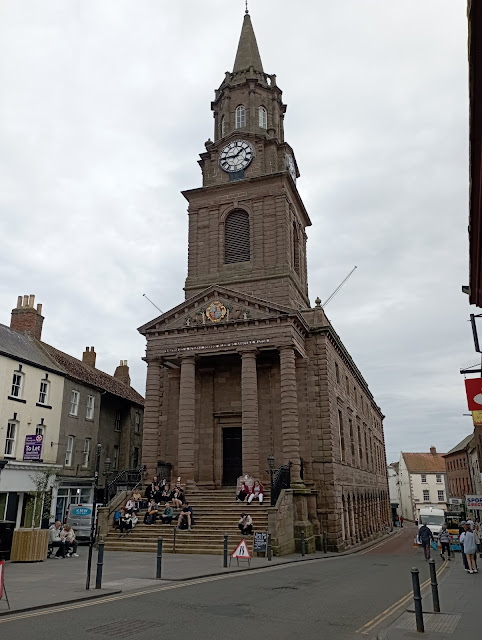It has been said that travel broadens the mind. I had unexpected proof of this today during a visit to the museum in Grantown-on-Spey.
Grantown is one of my favourite places in Scotland. It's a very small town in the Cairngorms, with many handsome and massive old houses. Much of the town is surrounded by forests and woods, where you may catch sight of the elusive native red squirrel.
I learned in the museum that the town owes its existence to an eighteenth century landowner named James Grant. He was evidently a very active fellow. In addition to going on a 'Grand Tour' of Europe and having the drive to create a new town, he fathered no fewer than fourteen children. Not quite as randy as J.S. Bach, but you can't help feeling sorry for his wife.
The museum lies at the northern end of town, off the main drag, which is known as 'The Square'. It's run by volunteers, and there's a small entrance fee. As well as learning about the tireless James Grant, I discovered that Queen Victoria spent the night in Grantown in 1860. Further, and despite its diminutive size, the town once had two train stations, which, curiously enough, shared the same name. Now, sadly, there are none, although you can at least enjoy a walk along one of the disused lines.
At the moment the museum is hosting an exhibition devoted to the nineteenth century artist Edwin Landseer. It was here that I came across a piece of historical background which really caught my attention. Photography is forbidden inside the exhibition rooms, so I took notes instead:
In 1815, the Mount Tambora in present day Indonesia erupted. This massive volcanic explosion triggered a period of intense climate change. Ash in the atmosphere lowered global temperatures and caused severe weather events including the 'year without a summer' in 1816. Harsh winters led to failed harvests and livestock losses.
I very much doubt that the people sitting in roads in London or dousing themselves in orange paint have ever heard of the eruption of Mount Tambora. Perhaps they ought to do some reading. To quote Charlton Heston at the beginning of the movie Armageddon, 'It happened before, it will happen again. It's just a question of when.'








